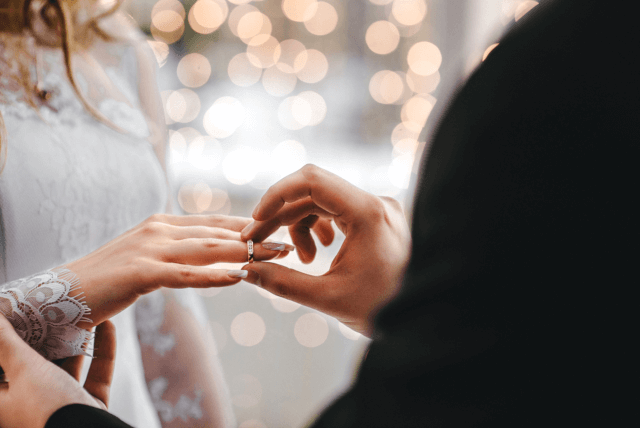Are engagement rings and wedding rings the same? This question has been a topic of confusion for many people. In this article, we will delve into the world of these two types of rings, exploring their history, meanings, designs, and cultural significance.
Engagement rings and wedding rings are often used interchangeably, but they actually hold different meanings and purposes. Understanding the difference between the two is essential in order to appreciate their significance and traditions.
The use of engagement rings dates back centuries, with a rich history that has evolved over time. From the symbolism behind the ring to the customs related to it, engagement rings carry a profound meaning that sets them apart from wedding rings. Let’s explore the fascinating world of these cherished symbols of love and commitment.
History of Engagement Rings
The history of engagement rings dates back to ancient times, with evidence of the tradition existing in Egyptian and Roman cultures. In ancient Egypt, the circle symbolized eternity and the ring was worn on the fourth finger of the left hand, where it was believed to have a vein that connected directly to the heart, a belief that persists today in the form of the “ring finger” tradition.
The Roman tradition included the giving of an iron ring to symbolize strength and permanence.
In Europe during the Middle Ages, engagement rings were often used as a sign of contractual agreements between families rather than a symbol of romantic love. It wasn’t until the 15th century that diamond engagement rings became popular, particularly in royal and aristocratic circles. The use of diamonds in engagement rings became more widespread after the discovery of new diamond mines in South Africa in the late 19th century.
The tradition of proposing with an engagement ring became more common in Western cultures during the 20th century. As societal attitudes towards marriage and relationships evolved, so did the symbolism and significance behind engagement rings. Today, engagement rings are seen as a tangible representation of love and commitment between partners, with a focus on personalization and meaningful design choices.
The Evolution of Engagement Ring Styles
Over time, there have been significant shifts in engagement ring styles. From simple bands and gemstones to elaborate designs featuring intricate settings and unique cuts, engagement rings have evolved to reflect changing tastes and trends.
The emergence of various metal options such as platinum, rose gold, white gold, and yellow gold has also contributed to this evolution. Additionally, advancements in jewelry-making technology have opened up new possibilities for creating custom-designed engagement rings that capture each couple’s unique story and style preferences.
Meaning Behind Engagement Rings
Engagement rings hold a deep symbolic meaning that goes beyond just being a piece of jewelry. The giving and receiving of an engagement ring is a tradition that symbolizes a commitment to marriage and a future together. These rings are often set with precious stones, such as diamonds, to symbolize the enduring and eternal nature of the relationship. The exchange of an engagement ring represents a promise and a declaration of love and dedication between two people.
The symbolism behind the engagement ring dates back centuries and has been prevalent in various cultures across the world. In ancient Rome, for example, engagement rings were made from iron to symbolize strength and permanence, while in ancient Egypt, the circle shape of the ring was seen as a representation of eternity. In modern times, the tradition continues to evolve, but the underlying symbolism remains consistent – it is a tangible symbol of commitment and love.
When choosing an engagement ring, many individuals consider not only the aesthetics but also the symbolic value behind it. From classic solitaire diamond rings to unique vintage styles or customized designs, there are various options available that can reflect the couple’s relationship and personal values. Some popular options for engagement rings include:
- Solitaire rings
- Halo rings
- Three-stone rings
- Vintage-inspired rings
Ultimately, an engagement ring is meant to be a physical representation of love and commitment between partners as they prepare for their future together. It holds sentimental value and serves as a reminder of the promise made during this significant time in a couple’s life.
Types of Engagement Rings
When it comes to selecting an engagement ring, there are a variety of styles, materials, and designs to choose from. This important decision not only reflects personal taste but also carries significant symbolism. Below are some popular types of engagement rings:
- Solitaire: A classic and timeless choice, featuring a single diamond or gemstone as the centerpiece.
- Halo: This style surrounds the center stone with a halo of smaller diamonds or gemstones, adding extra sparkle and brilliance.
- Three-stone: Symbolizing the past, present, and future, these rings feature three stones, often diamonds or other precious gems.
- Vintage-inspired: These rings draw inspiration from past eras and often feature intricate details and filigree designs.
In addition to the style of the ring, the choice of material is also significant. Common options include platinum, white gold, yellow gold, and rose gold. Each metal has its own unique properties and aesthetic appeal. Furthermore, some couples may opt for alternative materials such as titanium or palladium for a more contemporary look.
In terms of design, customization is increasingly popular. Many couples choose to personalize their engagement rings with engraving, incorporating birthstones or selecting a unique setting. Ultimately, the type of engagement ring chosen is a deeply personal decision that should reflect the individuality and style of the wearer.
Wedding Rings vs Engagement Rings
When it comes to discussing the differences between engagement rings and wedding rings, it’s important to understand that these two types of jewelry serve different purposes and carry different meanings. It is a common misconception that engagement rings and wedding rings are interchangeable, but in reality, they hold distinct symbolism and are worn at different stages of a relationship. In this section, we will delve into the unique design elements and meanings behind both types of rings.
Design Differences
Engagement rings are typically known for their extravagant designs, featuring a large center diamond or gemstone. These rings are intended to symbolize the commitment of marriage and are often more elaborate in style. On the other hand, wedding rings are usually simpler in design, with a focus on elegance and timeless appeal. Wedding bands are traditionally made from precious metals such as gold or platinum and may feature intricate engravings or embellishments.
Symbolic Variations
The symbolism behind engagement rings is centered on the promise of commitment and the intention to marry. The act of presenting an engagement ring is a formal declaration of intent to spend one’s life with their partner. On the other hand, wedding rings symbolize the union and lifelong commitment that has been solidified through marriage. Exchanging wedding bands during the marriage ceremony signifies the official bond between partners.
Cultural Significance
In different cultures around the world, there are unique customs related to both engagement and wedding rings. Some traditions dictate specific styles or materials for these rings, while others emphasize the importance of family heirlooms being passed down through generations as symbols of love and devotion.
The significance of engagement rings versus wedding rings extends beyond mere accessories; they represent different stages within a romantic relationship and carry distinct meanings that reflect each stage’s unique importance. Understanding these differences helps individuals appreciate the cultural significance as well as personal meaning behind each type of ring.
Tradition and Customs
In many cultures around the world, the exchange of rings is a significant part of the engagement and wedding process. However, the customs and traditions related to these rings can vary greatly from one culture to another. In some cultures, both the engagement ring and wedding ring are worn on the same finger, while in others they are worn on different fingers. Additionally, the design and materials of the rings can also differ depending on cultural traditions.
For example, in many Western cultures, it is common for both men and women to wear wedding bands after getting married. These bands are often simple in design and are typically made of gold or platinum. On the other hand, in some Eastern cultures such as India, it is customary for the bride to receive intricate and ornate gold jewelry including rings during the engagement period. After marriage, she may continue to wear these rings along with her wedding band.
In some cultures, there are also specific rituals and ceremonies related to the giving and receiving of engagement and wedding rings. For instance, in Celtic tradition, couples may exchange Claddagh rings as a symbol of love, loyalty, and friendship. These rings have a distinctive design featuring two hands holding a heart adorned with a crown. Understanding these differences in cultural practices can help individuals navigate their own engagement and wedding ring choices based on their heritage or personal preferences.
| Global Cultures | Ring Customs |
|---|---|
| Western | Both men and women wear wedding bands; simple designs made of gold or platinum |
| Eastern (India) | Bride receives ornate gold jewelry during engagement; continues to wear alongside wedding band |
| Celtic | Exchange Claddagh rings as a symbol of love; features unique design with hands holding heart with crown |
Do All Engagement Rings Become Wedding Rings?
Engagement rings and wedding rings hold different meanings and symbolism, and their transition from one to the other is an important aspect of the tradition. An engagement ring is traditionally given at the time of a marriage proposal, symbolizing a promise of future marriage and eternal commitment. On the other hand, a wedding ring is exchanged during the actual wedding ceremony, signifying the official union and marital status of the couple.
The transition from an engagement ring to a wedding ring is an integral part of the wedding process. It signifies the progression from being engaged to being married, and it symbolizes the fulfillment of the promise made with the giving of the engagement ring.
In many cases, after marriage, both rings are worn together on the same finger. While some individuals may choose to wear their engagement ring on their right hand or switch it to another finger after getting married, others prefer to wear only their wedding ring after their nuptials.
It’s also worth noting that many couples opt for engagement and wedding ring sets that are designed to complement each other when worn together. These sets often have matching or complementary designs that create a cohesive look when worn simultaneously. Ultimately, while not all engagement rings become wedding rings in terms of being worn on the same finger once married, they still hold sentimental value as a symbol of love and commitment.
| Engagement Rings | Wedding Rings |
|---|---|
| Given at time of proposal | Exchanged during wedding ceremony |
| Symbols promise of future marriage | Signifies official union and marital status |
| Transition from engaged to married | Fulfillment of promise made with engagement ring |
Conclusion
In conclusion, it is evident that while engagement rings and wedding rings are both symbolically important pieces of jewelry, they serve different purposes and carry different meanings. Engagement rings are traditionally given at the time of the proposal and symbolize the intention to marry, while wedding rings are exchanged during the marriage ceremony itself as a symbol of the commitment and unity of marriage.
The history and traditions surrounding engagement and wedding rings are rich and varied, with different cultural practices influencing the types of rings used and the customs associated with their exchange. However, regardless of these variations, the fundamental difference between engagement rings and wedding rings remains constant.
While some may choose to wear their engagement ring alongside their wedding ring after getting married, not all engagement rings become wedding rings. The decision to continue wearing both or to replace the engagement ring with the wedding ring ultimately depends on personal preference. Some may choose to consolidate both into a single ring through an upgrade or redesign process.
Overall, although there are similarities between engagement rings and wedding rings in terms of style and material, they serve distinct purposes in marking different stages in a romantic relationship. And so, in answer to the question “Are engagement rings and wedding rings the same?”, it is clear that they are not. They each hold unique significance in representing love and commitment at different points along the journey towards marriage.
Frequently Asked Questions
Can You Use an Engagement Ring as a Wedding Ring?
Yes, it is possible to use an engagement ring as a wedding ring. Some people choose to wear both the engagement and wedding rings together, while others opt to only wear the wedding ring after getting married.
Is an Engagement Ring Different Than a Wedding Ring?
An engagement ring is traditionally given at the time of the proposal, symbolizing a promise of marriage, while a wedding ring is exchanged during the actual wedding ceremony to signify the official union between partners. Engagement rings often feature a center stone, while wedding rings are typically simpler in design.
What Happens to the Engagement Ring When You Get Married?
When you get married, the engagement ring is usually worn on the same finger as the wedding ring. Some people choose to move the engagement ring to their right hand or simply stop wearing it altogether, but there are no hard and fast rules about what should happen to the engagement ring after marriage.
Ultimately, it’s a personal choice influenced by tradition and preference.

Welcome to my blog about home and family. This blog is a place where I will share my thoughts, ideas, and experiences related to these important topics. I am a stay-at-home mom with two young children. I hope you enjoy reading it! and may find some helpful tips and ideas that will make your home and family life even better!





